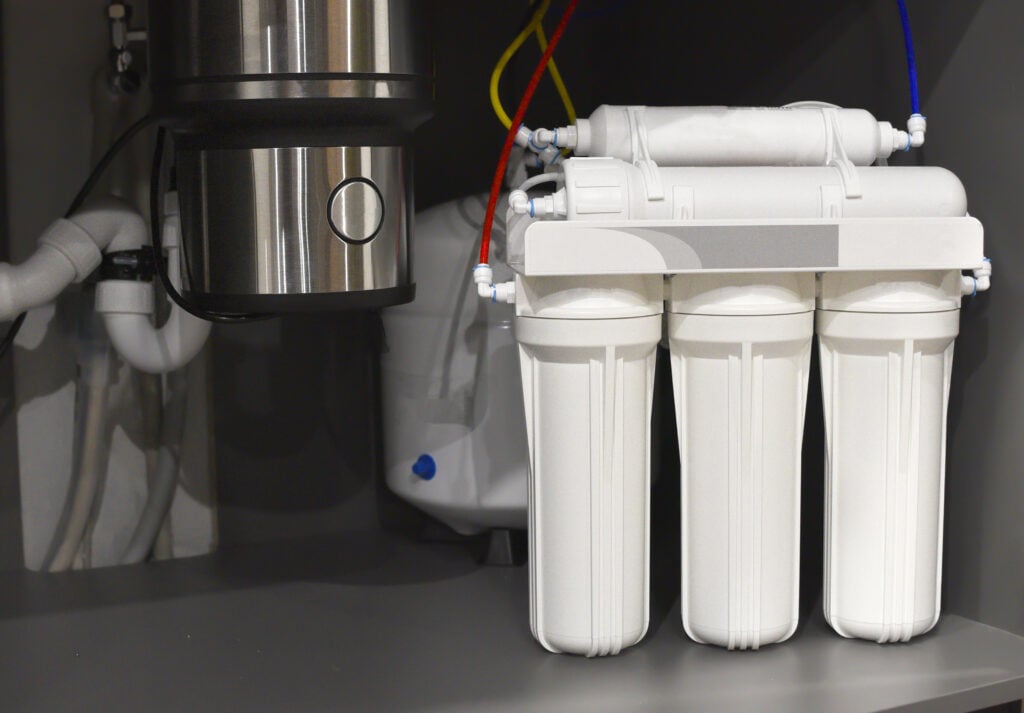Whether you’ve got city water or well water, there are many reasons that your household water could be problematic. Some problems are quite obvious, like hard water. With hard water, mineral deposits build up on sinks, faucets, and bathtubs. Those problems are obvious. However, homeowners should be aware of the many other problems that can impact their household water supply. And then, once they know that, they should also know how to make the water safe and healthy.
The Most Obvious Problem: Hard Water
Hard water can do much more damage than just creating unsightly deposits on plumbing fixtures. Those same buildups occur inside pipes. Those deposits can get so thick that they actually reduce water pressure. When they build up inside appliances, they can shorten the life of the appliance, meaning that premature replacement is needed.
The Solution: The answer is simple and known by many: Install a water softener to remove excessive levels of calcium, magnesium and other minerals.
But homeowners should not stop there.
Less Common Problem #1: Sediment
If the well water or city water tends to include sediment, it can plug up appliances, filters and softeners.
The Solution: A sediment filter is a simple device that can remove sediment before it reaches other filters or appliances.
Less Common Problem #2: Chlorine and Its By-Products
Municipal systems must disinfect their water supplies before sending them to households. Therefore, your home’s water could contain either chlorine or the by-products of chlorination called trihalomethanes. These four chemicals result from the interaction of chlorine with organic matter like plant material. The four harmful chemicals formed during disinfection are chloroform, bromodichloromethane, dibromochloromethane, and bromoform. Drinking water that contains trihalomethanes is associated with bladder cancer, skin cancer and harm to developing babies.
The trihalomethanes are only one type of harmful chemical created by chlorine disinfection. The others are haloacetic acids and chlorite. The effects of these chemicals include increased risk of cancer, kidney or gastrointestinal problems and hearing loss.
The Solution: Carbon filters can effectively remove these chemicals from your drinking water.
Less Common Problem #3: Harmful Minerals
In the category of harmful minerals are heavy metals like lead, mercury, chromium, selenium, cadmium and copper. Too much iron can also be a problem. Even though these minerals are often naturally occurring, elevated levels should be addressed. The risks of consuming these minerals are varied but can include kidney and liver damage, anemia, developmental delays and an increased risk of cancer.
The Solution: Reverse osmosis treatment of your water can remove or reduce these minerals to acceptable levels. (Note: There is no acceptable level of lead in drinking water.)
Less Common Problem #4: Industrial Chemicals
As a result of military training or activities, firefighter training, airport activities, industrial, manufacturing and agricultural operations and much more, harmful chemicals can be released. Once in the water, air or ground, they can travel to bodies of surface water or groundwater. Then, because water can travel long distances underground, these chemicals can make it into our municipal water supplies and private and public wells.
Included in this group of toxic substances are pesticides, herbicides, solvents, petroleum products and hundreds of other chemicals. Some municipal water services may not fully remove these chemicals before providing water to consumers, especially in a small or rural community. Some communities in Alabama, for example, have been provided water with excessive levels of a group of toxic chemicals referred to as PFAS. These are also called forever chemicals because some of them take a hundred years or longer to break down into safe forms.
The Solution: Depending on what chemicals are found in a water supply, a combination of reverse osmosis and carbon filtration may be needed to fully remove them.
Water Filtration Is Not “One Size Fits All”
As you can see, water softening alone is not enough. Simply softening your water supply can leave toxic minerals and chemicals behind. Getting the right filtration system for your household water starts with professional water testing, so you know exactly what needs to be removed. Your home may even require a multi-step system to remove sediment, chlorine and its by-products, industrial chemicals and/or excessive levels of minerals.
To find out exactly what you need to remove from your water, start with a thorough test of your water with ETR Laboratories. Choose the Premium water test and find out exactly what you need to exclude from your home’s water supply.

